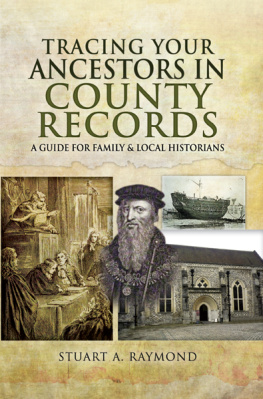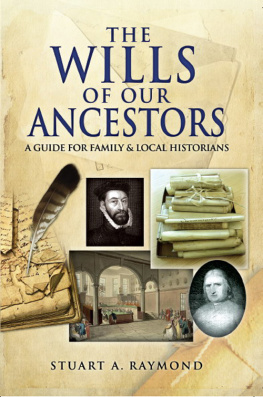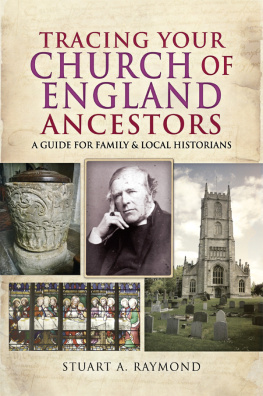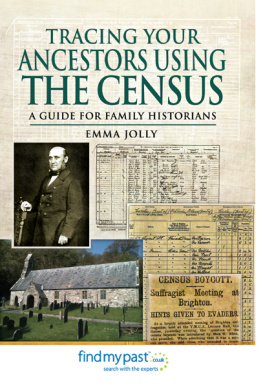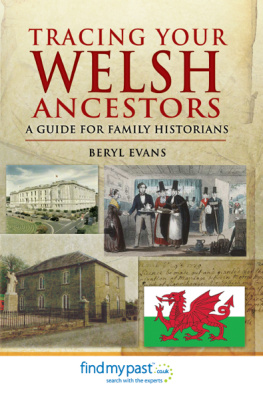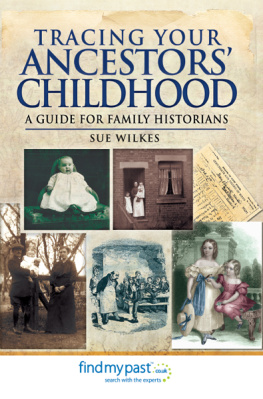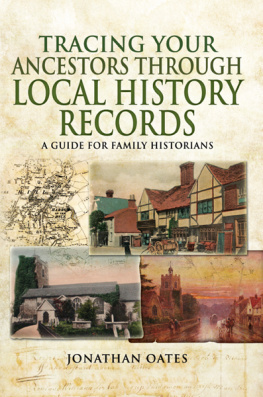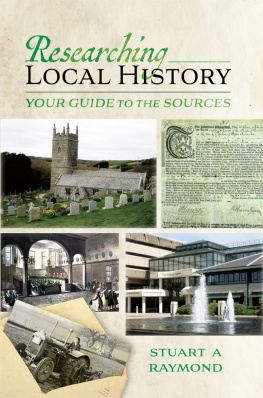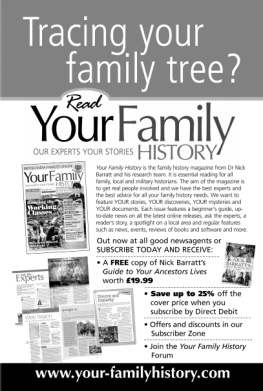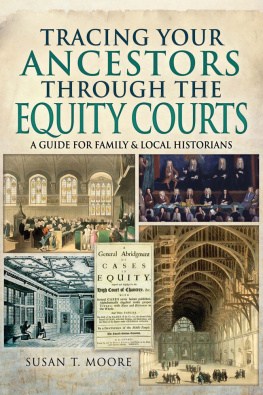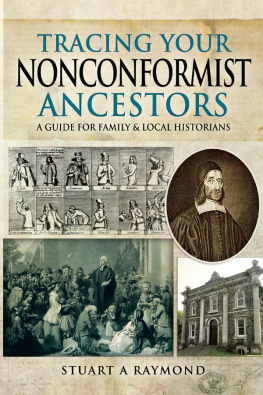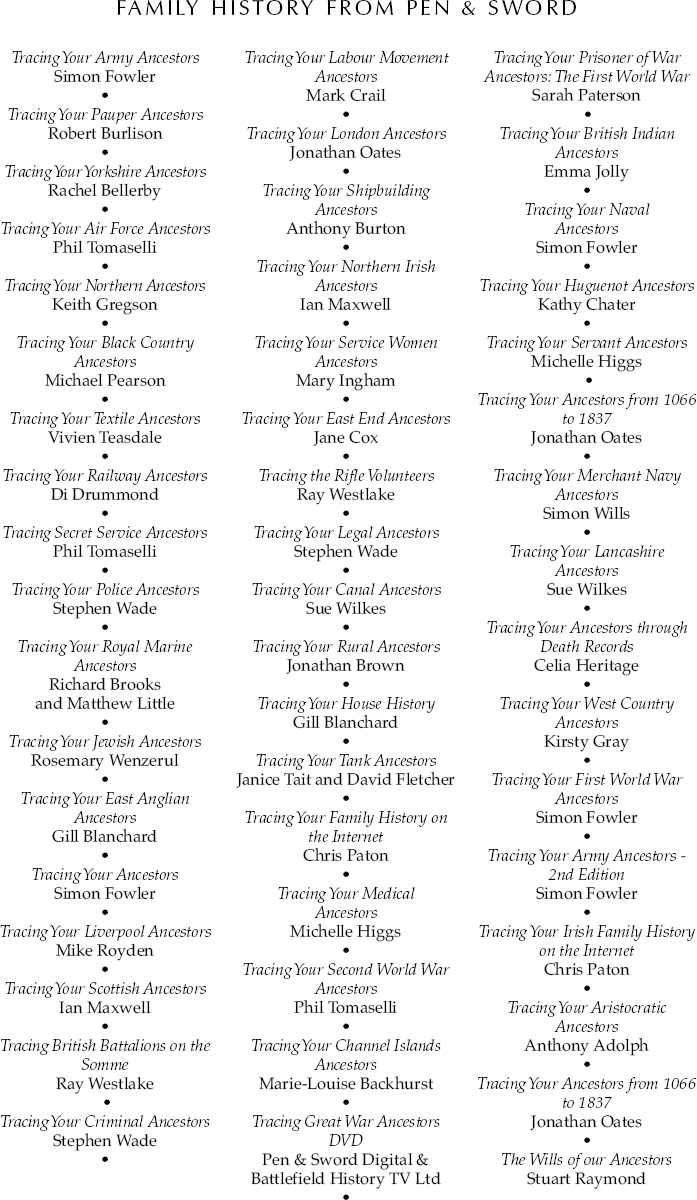
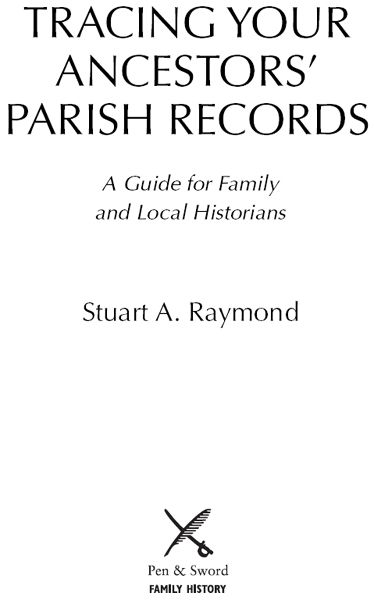
First published in Great Britain in 2014
P E N & S W O R D F A M I L Y H I S T O R Y
an imprint of
Pen & Sword Books Ltd
47 Church Street
Barnsley
South Yorkshire
S70 2AS
Copyright Stuart A. Raymond, 2015
ISBN: 978 1 78303 044 6
EPUB ISBN: 978 1 47385 187 0
PRC ISBN: 978 1 47385 194 8
The right of Stuart A. Raymond to be identified as Author of the Work
has been asserted by him in accordance with the Copyright,
Designs and Patents Act 1988.
A CIP catalogue record for this book is
available from the British Library.
All rights reserved. No part of this book may be reproduced or
transmitted in any form or by any means, electronic or mechanical
including photocopying, recording or by any information storage
and retrieval system, without permission from the Publisher in writing.
Typeset in Palatino and Optima by
CHIC GRAPHICS
Printed and bound in England by
CPI Group (UK), Croydon, CR0 4YY
Pen & Sword Books Ltd incorporates the imprints of Pen & Sword
Archaeology, Atlas, Aviation, Battleground, Discovery, Family History, History,
Maritime, Military, Naval, Politics, Railways, Select, Social History, Transport,
True Crime, and Claymore Press, Frontline Books, Leo Cooper, Praetorian
Press, Remember When, Seaforth Publishing and Wharncliffe.
For a complete list of Pen & Sword titles please contact
PEN & SWORD BOOKS LTD
47 Church Street, Barnsley, South Yorkshire, S70 2AS, England
E-mail:
Website: www.pen-and-sword.co.uk
CONTENTS
ACKNOWLEDGEMENTS AND PREFACE
T his book depends heavily on the publications of countless local historians. Unfortunately there are far too many to mention them all individually but I hope they will accept this collective acknowledgement. My apologies to any who may have been cited without due acknowledgement.
I have also depended heavily on the resources of the various libraries I have used. They are too many to name here but a special thanks goes to librarians in Trowbridge who obtained innumerable interlibrary loans for me. Thanks, too, to those who read my manuscript in draft: Simon Fowler and one of my students who wishes to remain anonymous. Finally, thanks go to my wife Marjorie, who drags me away from the computer whenever I have been there too long.
The original draft of this book contained far too many endnotes and I have had to prune them drastically. References to specific local records have therefore not been noted as it should be easy to identify the locations of the originals (although I have mostly used published sources).
Stuart Raymond
April 2014
Chapter 1
WHAT CAN YOU DO WITH PARISH RECORDS?
I f you want to know how life was lived in past centuries, then you will find much useful information in parish records. They are far from being the dull and boring documents that those who have not read them might think. Among the papers from the parish chest are records of the devotion of medieval parishioners to their church, the iconoclasm that wrecked most medieval church art, the church ales [festivals] that offended puritan sensibilities, the violence of being whipped at the carts tail, the tragedies of sudden death, the property that was divided up when the land was enclosed, the accusations of disreputable practices levied against both clergy and laity, the penny-pinching of many vestries, the arguments over the cost of the poor, the kindness shown to young men who benefited from apprenticeships funded by charities, the beliefs that persuaded churchwardens to assist sufferers from the Kings Evil [scrofula] seeking a cure from the touch of the monarch, and the wickedness of Poor Laws that forced removal even when young girls were about to be delivered of their illegitimate children. However, perhaps we should not judge eighteenth-century parishioners by twenty-first-century standards.
There are many ways in which these documents can be used. The family historian is particularly well served by registers of baptisms, marriages and burials, vital for the compilation of pedigrees. He or she can also find burials recorded in churchwardens accounts, which may detail fees paid for ringing the bells, for hiring the bier and for the burial itself. Relationships may be recorded in bastardy orders, settlement examinations and apprenticeship records. Researchers will also find names in a multiplicity of different parish records. They can be used not merely to construct the bare bones of a pedigree but also to place ones family in its historical context. The parochial offices held by family members, the property they owned, the apprenticeships they served, the work that they did, the religion that they practised; all may be revealed by parish records. There are numerous lists of names, helping to place ancestors in time and place and sometimes recording their houses and farms. The names of ratepayers are listed in the accounts of churchwardens and other officers or perhaps in separate rate assessments. Easter books list parishioners and their offerings; pew lists and plans reveal the relative status of everyone in the parish. Landowners and occupiers can be identified in enclosure awards and tithe apportionments, which can be usefully compared with nineteenth-century census returns.
The local historian is also well served by these records. They provide the basis for research in many topics, such as demography, landscape history, religious history and agricultural history. Sometimes they throw useful light on national affairs: for example, the Upton (Nottinghamshire) constables accounts reveal much interesting information concerning the civil war, as do those of Stathern (Leicestershire). However, their value is much greater than that. Many works of great importance for English history depend upon them. Parish registers, for example, form the basis of Schofield & Wrigleys The Population History of England 15411871 (1981), which provided a new model for understanding the way in which population grew over three centuries. Similarly, churchwardens accounts written by the sixteenth-century priest of Morebath (Devon) form the basis for Eamon Duffys The Voices of Morebath (Yale University Press, 2003); a groundbreaking study showing how the Reformation was greeted in a remote Devonshire parish. Duffys work complemented Robert Whitings The Blind Devotion of the People: Popular Religion and the English Reformation (Cambridge University Press, 1989), which described popular reactions to the Reformation in Devon and Cornwall and also drew heavily on churchwardens accounts.
The reaction of most Englishmen to the Reformation has been characterized as stoical compliance with, rather than enthusiasm for, the new protestantism.
Accounts that show heavy expenditure on church towers, new naves and sometimes entirely new churches clearly demonstrate that late-medieval English Catholicism was vibrant until the last breath of Queen Mary. If further evidence is needed, then a walk in the country is likely to provide it: in most counties it is not possible to go more than 3 or 4 miles without seeing an example of a church renovated or rebuilt in the fifteenth or early sixteenth century. Parish records may well contain evidence for the work undertaken.
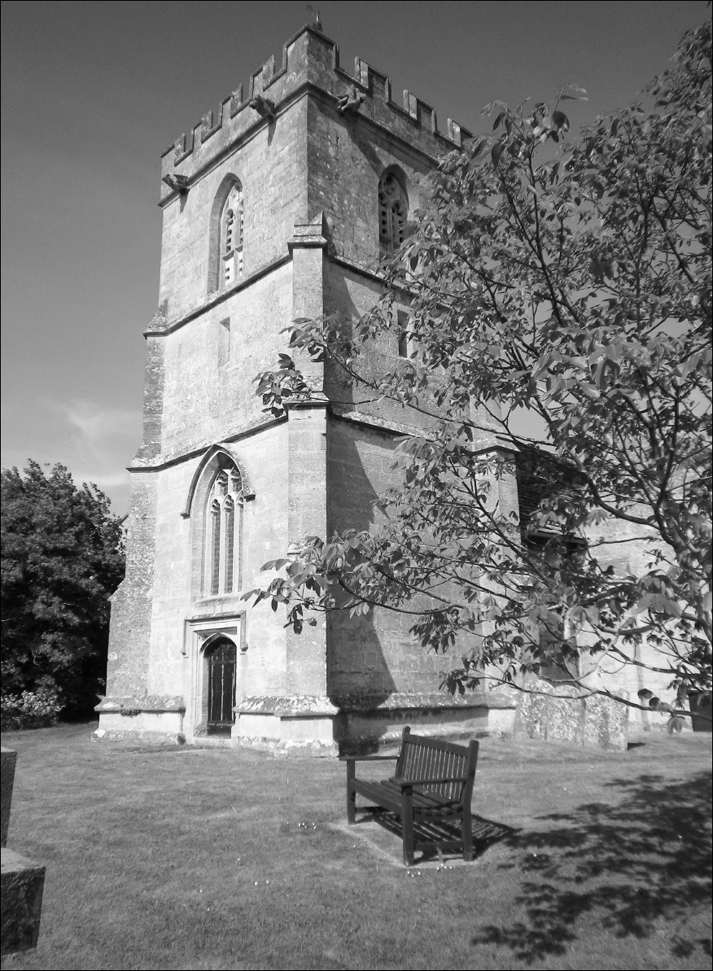
Broughton Gifford (Wiltshire) church tower
Next page

